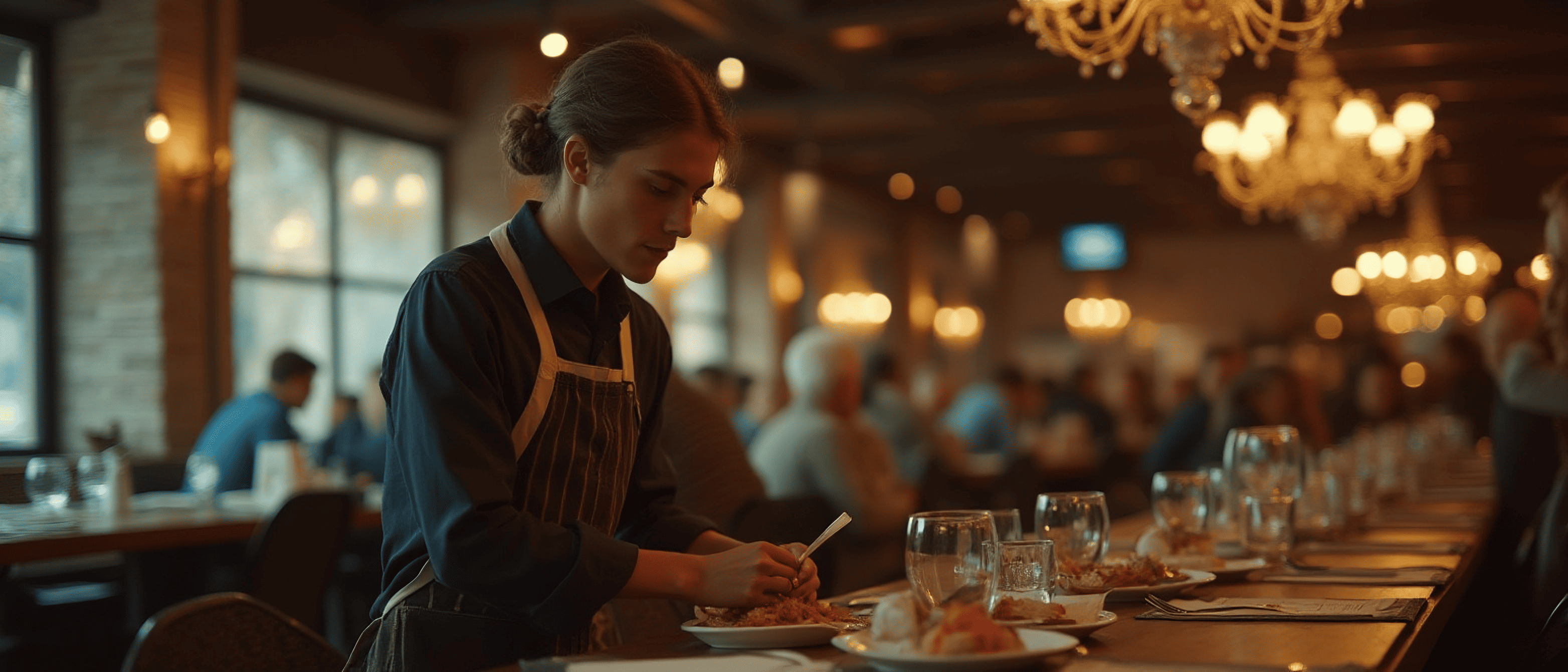How to train waiters to sell more
An ordinary waiter takes the order, brings the food and clears the dishes. A professional waiter manages the choice of the guest so that he orders more and leaves satisfied. Several restaurant sales techniques help with this: soft sales, upsell, and the art of recommendations. Let’s look at how to apply them and what it’s worth to train the team so that revenue grows without pressure on the guest.
Soft sales: we sell easily and unobtrusively
When the waiter understands what the guest wants, the selection process becomes comfortable. People like to be helped. The main thing is to do it naturally.
Key techniques:
- Building trust. An attentive look, a positive attitude, confidence in the voice — these simple qualities form an atmosphere of care. When the waiter conducts the dialogue calmly, without haste, the guest feels comfortable and more willing to accept recommendations.;
- A choice without a choice. Instead of “Would you like dessert?” it’s better to say, “We have an amazing cheesecake with strawberry sauce and chocolate fondue with vanilla ice cream. Which is closer to you?” This technique works gently, without pressure.;
- Emotions in the descriptions. The difference between “Try our shrimp salad” and “Salad with crispy tiger prawns, fresh arugula and honey and lemon sauce is light but very rich.” The second option arouses appetite and arouses interest.
The restaurant’s automation system can help here. It integrates tips for waiters, shows popular dishes, and reminds you of seasonal promotions, which simplifies the recommendation process.
Upsell: increasing the average receipt
Additional sales are not just “take something else.” This is the ability to offer a guest the perfect combination for a delicious and vibrant dinner.
Effective techniques:
- Addition to the order. If the guest has chosen pasta, you can offer a glass of white wine, if you have ordered a steak, a glass of red wine. The main thing is to justify the offer: “This dish is perfect…”;
- Logical recommendations. For example, if a guest has taken something hot, it is appropriate to say: “This beef is cooked over an open fire, and our sauce based on baked garlic is perfect for it.” Such an addition is perceived organically.;
- Group orders. When there are several people at the table, it makes sense to offer dishes for the company: a cheese plate or a set of snacks.
This process can actually be made more efficient. For example, a restaurant app can automatically recommend high-margin add-ons when an order has already been placed. This increases the chances of increasing sales.
The Art of recommendations
The waiter is an expert who knows the cuisine and helps the guest make a choice.
How to do it right:
- Knowledge of the menu. To sell more, the waiter must understand how the dishes are prepared, what ingredients are used, and how they differ from each other. For example, a waiter will recommend a vegetarian version of a dish if he knows that it can be adapted by replacing meat with vegetables.;
- Adjusting to the guest. Some people love classics, while others are looking for new flavors. If the customer prefers a more traditional cuisine, the waiter will offer the popular pasta carbonara or steak. If the guest is determined to experiment, choose a dish with an unusual combination of flavors or exotic ingredients.;
- Flexibility in offers. If a person is in doubt, you can say, “Try this option, if you like it, I’ll tell you about other interesting positions next time.” This technique creates a sense of individual approach.
Restaurant management software can collect data about guests’ preferences, allowing waiters to offer personalized recommendations based on their past orders.
Process automation
Test the Neon Alisa restaurant management system and see how easily and effectively you can increase sales, improve service, and analyze each guest’s preferences.
